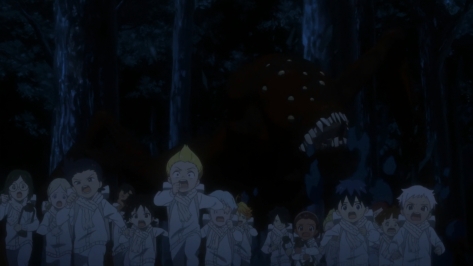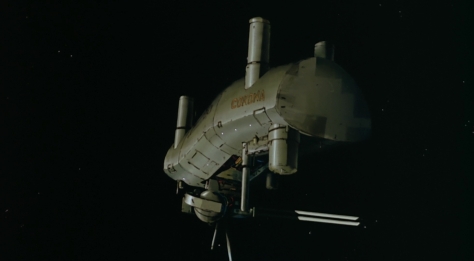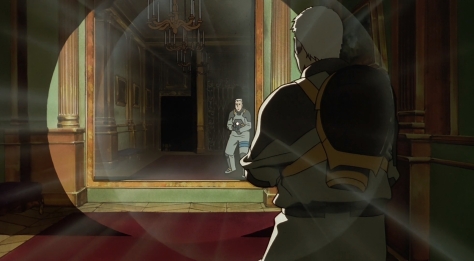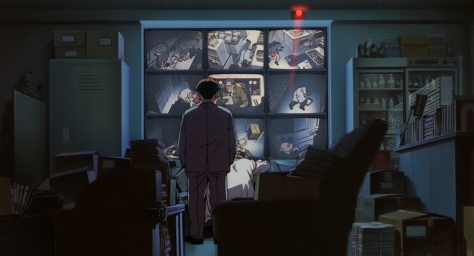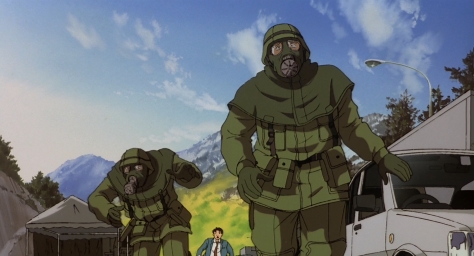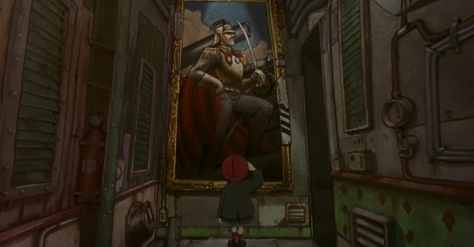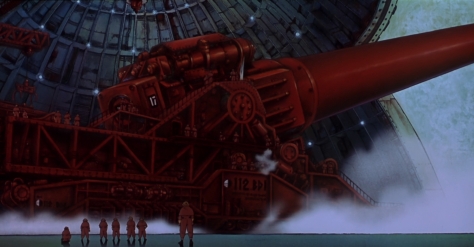Japanese Title: Yakusoku no Neverland 2nd Season
Related: The Promised Neverland Season 1
The Promised Neverland manga (partially included in this review)
Watched in: Japanese
Genre: Psychological Mystery Thriller
Length: 11 episodes (season 2), 181 chapters (manga)
Positives:
- Opening song
Negatives:
- Most egregious truncation of the source material in anime history?
- Doesn’t succeed on its own either
- Recycled animation
- Some bad acting amongst new characters
(Request an anime for review here.)
Contains spoilers for season one – unavoidable.
What the hell happened here? I watched the first season of The Promised Neverland a year ago, which I quite liked, and now I come back to this…this… What do you even call this? Did an intern carrying the script trip over and have most of the pages fall into a shredder, collect what was left, rewrite the page numbers at the bottom, and then hand it to the animation department?
I had heard rumblings that viewers were discontent with the cutting of material. I did not realise just how bad it was until I read the manga. This review was to come out weeks ago, but less than halfway through the season, I could already feel something missing, so I turned to the manga, you know, to read the 30-50 chapters that went into this season. Little did I realise that this adapted all remaining chapters.
The Promised Neverland, at first, is about children living in an innocent orphanage before they learn that this is a farm and they are the livestock for demons. Season two follows them after the escape and on the run, guided by a series of clues left by the mysterious “William Minerva” to get back to the human world.
Season one adapts 37 chapters of the 181 total. Season two “covers” the rest. That’s right, 144 chapters in 11 episodes. And Horimiya fans reckoned they had it bad. I don’t know why studio CloverWorks thought that Promised Neverland – this anime, of all anime – would work with such truncation. I’m not certain (and I don’t have time to do the research right now), but this may just be the worst case of cut content in anime history. We’ve had incomplete adaptations of manga epics in the past or ones that created a new ending to finish what they had available, yes, though I can’t recall any finished adaptations with such massive holes. Unlike Horimiya, which worked alright without those chapters, Promised Neverland doesn’t work without 50% – at minimum – of what they removed. Why even bother with a second season if it’s going to lack all substance and make little sense? The first season worked fine as a standalone anime with suggestions to read the manga if you want the rest.
It hurts the brain to comprehend.
It’s particularly strange because season one was such a good adaption. In fact, I found it improved upon the manga by cutting back on inner monologues that over explain proceedings to the audience and made it darker. The manga is more light-hearted and has more playful moments, whereas the anime pushed the thriller angle to much success. A quick side note, however, is that the tone for the Grace Field arc in the manga better matches the rest the series. The manga isn’t anywhere near as dark as the premise would imply. The anime would have needed to make a few changes to the rest to match season one, which makes the abundance of “happy kids” moments, as I refer to them, more glaring and irritating in the second season. They work in the manga because they are tonally consistent and only take a page rather than a scene. Of course, they are also further apart with all content present.
Season two initially matches the manga well enough when the kids meet two demons that don’t eat humans and learn more of the world. We learn that demons eat meat to maintain their form and intelligence. Without feeding, they would devolve into ravenous savages. I love this world building detail. However, a few episodes in, they reach the hideout provided by Minerva and it all flies out the window. So butchered is this one section alone that there is no purpose to leaving it in. In the manga, it turns out there is someone living in the hideout already, a crazy man. He is the whole point of that section, so to remove him but leave the rest is simply stupid.
Then comes the time skip. Around 90 chapters ignored, gone, including the best action arc of the series, where some kids find themselves in a demon duke’s hunting ground for sport. Worse still is the effect on what they do adapt from the final arc. Without the setup that comes before, the finale is limp. Everything revolves around a grand plan, which already requires a fair suspension of disbelief in the manga, yet now demands a total leave of logic. The plan only works if all antagonists are absolute idiots.
See, this season’s failure isn’t that it cut material. I don’t inherently care about cut material. Its failure is being a bad anime, adaptation or not. Again, why did they bother?
This season isn’t worth your time. Instead, look at the manga.
The manga isn’t without its faults. I mentioned earlier that it wasn’t dark enough because there isn’t enough death, especially considering the pre-schoolers in the group (I have the impression the author grew too attached to the characters). The answer and eventual solution to the demon and human world divide is so lame. Magic? Really? While the final arc is a great finish to the ride, the epilogue chapters are just contrived nonsense (again, author is too attached). Contrivances and coincidences to solve non-action problems are a recurring issue with this author. Minerva’s pen, for instance, is a wonder machine that solves any plot puzzle for which the author couldn’t think of an idea, providing the next clue on the trail. I would have also liked to see more of the mother and the important demons to give them more impact in the end. The mother especially needed more chapters.
Contrary to my machine gun of negatives, The Promised Neverland is a good manga I recommend to anyone unless you didn’t care for the first season. It’s a page-turner, the demon culture is interesting, you feel for the main characters (the cast is too big to care for the rest), and the action is solid. Oh, nice art too – love the full-page illustrations before each chapter. Meanwhile, the only good element of The Promised Neverland Season 2 is the opening song.
Overall Quality – Low
Recommendation: Avoid it. Read The Promised Neverland manga instead.
(Request reviews here. Find out more about the rating system here.)

